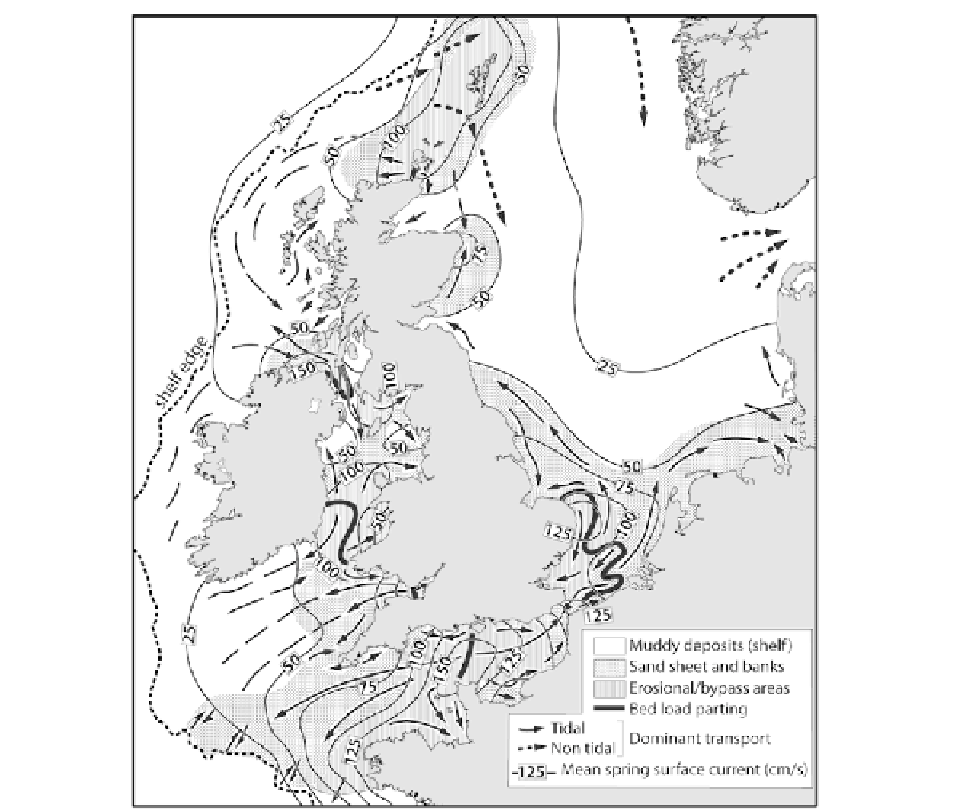Geology Reference
In-Depth Information
Fig. 13.16
Sea-floor sediment type, surface currents and tidal-
transport pathways around the British Isles. Arrows show poten-
tial bedload-transport directions that diverge from erosional
bedload partings, to convergence areas where deposition occurs
(After Howarth
1982
and Johnson et al.
1982
)
13.6.2 Bedform Distribution
direction of the residual transport begin to form. In
regions of limited sand, the dunes are separated by
areas with no sand cover (i.e., they are 'starved') and
have a barkhanoïd shape (Fig.
13.18b
). If there is a
larger amount of sand, the dunes coalesce to produce
tidal sand sheets (Fig.
13.18a
) and, under proper con-
ditions, tidal sand ridges (Fig.
13.18c
). At the extreme
end of the transport pathway, sheets and patches of
rippled fine and very fine sand occur where the current
speed is below the critical velocity for dune stability.
As discussed above, the upper limit on dune size
is controlled by the thickness of the boundary layer,
which is approximated by water depth in many situa-
tions. However, current speed, grain size and sediment
A predictable progression of bed features occurs along
a tidal-transport pathway as a result of changes in the
sediment regime (Belderson et al.
1982
; Fig.
13.18
). In
erosional, bedload-parting areas, older deposits are
exposed or are covered by a patchy veneer of lag gravel
and sand. Erosional features include current-parallel
furrows and flute-shaped depressions. Mobile sand in
these areas occurs as sand shadows in the lee of bed-
rock obstacles and as current-parallel sand ribbons.
Subaqueous dunes can be present on the sand ribbons.
As sand begins to become more abundant down the
transport pathway, fields of dunes that migrate in the

